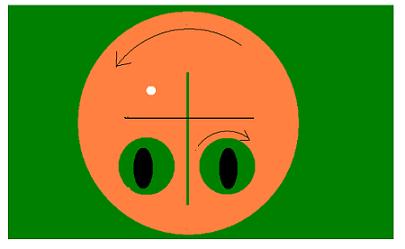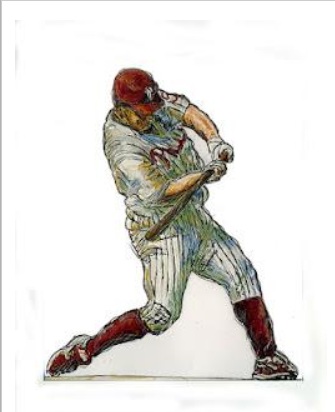Ah, rdurin, you made my day. Anytime reference to Crime Dog prompts the baseball gods to smile and high-five each other.
@ Range Rat: cross eye dominance means your lead eye has just that little bit of extra time to see the ball into the contact zone. Subtle, to be true, but as we’ve all learned, the higher up the food chain one gets, the more subtle matters. So yes, there is high correlation between MLB batting champions and cross eye dominance.
@Twomasters, that last post with Ray Floyd and The Titanium Man was excellent. Those four frames illustrate unambiguously why baseball players tend to suck at golf.
Notice frame three. Cal has that bat in absolute max lag pressure. It’s unlikely he could get anymore into it; he is at the upper limit of the equasion.
By frame four, he has dumped it all. On purpose, by design. And he hasn’t hit the ball yet. Again, on purpose, by design.
Notice the similarites in the hands / arm alignment in frame four for both athletes. Both show skilled athletes resisting (and thus generating) fairly strong centrifigal forces on their clubs / bats.
But also notice (and this is the real money shot) that the golfer’s position is well past impact, while the baseball player’s is pre-impact.
And also notice that the baseball players contact point is a full 10 inches “into the field” or “down the fairway” from the golfer’s.
Baseball players who achieved any sort of skill at the plate developed a swing feel that is fatal in golf. Yes, we get the rotary motion bit. And yes, it’s a pivot driven swing (you ain’t gonna swing a 34 ounce bat any other way. Sorry). And yes, we feel mega lag pressure.
But we dump our lag early. We don’t want to hold it. Holding the lag genearlly means striking out. Or, at the very best, a foul ball.
When we bring this feel to the links, it generally manifests in two ways: Drainage-ditch sized divots, or truly spooky pulls.
The biggest divots you’ve ever seen are likely from baseball players. In order to hit the ball in a conventional address ( say, inside your left foot) your jock brain knows to trigger the lag dump somewhere around your right knee. And that leads to Fatty McFatterson EVERY TIME.
But because that inner jock is kinda competitive, it slowly learns to compensate for the extra swing arc. We turn sooner (the exact opposite of pivot stall) to change the swing plane and give your hands / arms enough room to dump the lag early.
When it works right, whoo eee: shots that are two - three clubs longer than normal, dead straight, but with a “holy cow, you gotta be kiddin me” amount of pull. (and if you somehow manage to roll the clubface closed, you can get truly wicked pull hooks, landing in tee boxes two fairways over)
I am by no means the only former ball player to hit a balatta ball with a persimmon driver a genuine 285 carry, dead straight but 50 degrees left.
We TOTALLY GET that we need to work our bodies into the swing. But we also totally DON’T GET the proper swing intentions (holding lag until impact) until someone shows us how.
Before ABS, I truly thought a golf swing was supposed to have the same feel as pulling a “down and away” slider. Nope. Not at all.
Instead, what we want is swing that sends a banana ball into the dugout.
Regards
Hawg1


